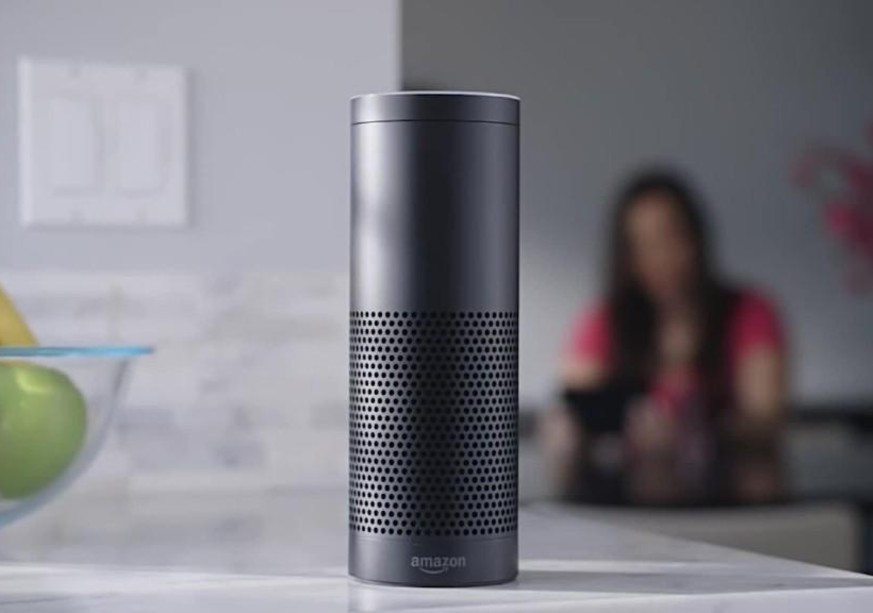
Explore our NEW Knowledge Base and Help Desk to find everything you need to attract, engage and convert talent with your Vennture website.
Discover More
They say home is where the heart is, but what is the heart of your home? The people within it? The boiler? The fridge? How about what your home says to you?
With sales of voice-activated home assistant devices such as Google Home and Amazon Echo predicted to reach 24.5 million this year (more than 3 times 2016’s 6.5 million) it’s only the beginning of a technology sure to change the way we interact with, and live in, the digital world.
Firstly though, how does this technology work? Natural Language Processing and Text-to-Speech are used to comprehend a user’s voice, which is then processed in an ever-growing database. This then matches the request (whether that’s a question or instruction) with a response that is given to the user, as opposed to the pages of results you receive when searching through Google or Bing.
Though this may seem limited, it’s considerably targeted, as every search is indexed and user behaviour is measured to determine whether the device is presenting the correct answer. As Lois Wentworth from The Drum Network states, ‘Google Now, Cortana and Siri aren’t mindlessly answering our questions; they’re getting to know us’.
A very exciting development is Unruly’s Home of 2020. A magnificent mixture of interior design, home security and emerging technology such as augmented reality, virtual reality and holograms are contained within the IoT-filled home—a market itself expected to add £1.37 trillion to the global economy by 2019.
Its fridge allows you to browse recipes and order food, helpfully comparing prices at nearby supermarkets. The wardrobe considers the weather and then provides clothing suggestions or recommends new products based on your style (there’s a certain ‘Clueless’ fan in the office freaking out right now). Through AR you can look at new furniture and place them in the rooms they could potentially go. This is a new way to search and try out products, and it’s no surprise that brands are getting on board.
For example, your fridge may place a new item in your shopping basket and ask you whether you want it, and if you’d like to recommend it to your friends. It’s not hard to conceive that brands will target people in this, ‘You Might Also Like’ sense. Campbell’s is already doing this through its voice app.
Unruly claim that 84% of UK customers are open to companies and brands engaging with them in a connected home, with 67% claiming it will make their lives happier. Those surveyed were, however, concerned about brands invading their personal space and 43% were worried about security. Brands must therefore interact carefully within the home, only appearing where relevant and never snooping beyond their designated responsibilities.
As commanding a house or device to search for something with your voice requires less effort than trawling through pages of search results on a computer or tablet, it is possible that one day screens may disappear altogether. The fact this technology can recognise different voices and change their output accordingly highlights this, because instead of needing separate family devices, all searches could be done through one hub, yet still be tailored and personalised. Gartner already predicts that by 2020, one third of web-browsing will be screen-less, so a screen-less society is not impossible. I’m not too convinced about this, but a search box-less society? Maybe.
If these devices can recognise voices, then paying for products and services could become more secure as only you will be able to activate your account. Instructing your device to ‘Pay (insert website here)’ is also easier than inputting payment and delivery information every time you visit a new site, and doesn’t even require the press that an Amazon Dash button requires. We may reach a point where we can pay our bills through our voices alone, limiting the need for two/three-step security verification and time wasted in queues. This can only enhance the consumer experience.
Voice searchers tend to use more natural language when searching than those who type, because it’s more conversational in terms of interaction (i.e. with their device). This means longer search queries are more likely to begin with words such as “Who”, “What’, “Where”, ‘’How’’ and “Why” rather than the keyword-focused nature of their text equivalents. Businesses need to ensure their SEO responds to these forms of searches because as Stephen Mahoney (publisher of SearchEngineNews.com) states:
“Whenever a customer uses a highly specific search phrase, they tend to be looking for exactly what they are actually going to buy. In virtually every case, such very specific searches are far more likely to convert to sales than general generic searches that tend to be geared more toward the type of research that consumers typically do prior to making a buying decision.”
You could say we businesses need to use a little more conversation and a little less action.
A good place to start (if applicable) is your company’s FAQ section. Consider the kinds of questions people are likely asking about your business and how your answers can support them in this potentially-new-to-you voice setting and go beyond this. Remember, it’s all conversation! You wouldn’t just ask a friend where the restaurant is and their opening times, but phrases such as, ‘what is a popular dish at…’ and ‘what entertainment is provided at…’. This gives your brand a more human feel and shows you care about answering searcher’s more specific queries. Think key phrases, not key words.
A major concern is: If voice search only provides the user with one (or a few tailored) answer(s), then surely many businesses will lose out. Returning to the restaurant example, if a user searched, ‘what are the best restaurants in Manchester for pizza?’ considering the number of available options that a user would find through Bing or Google, those restaurants lower down the rankings may not be mentioned through voice search. At the moment it’s unclear how Amazon, Google, Apple or Microsoft attempt to tackle this issue when it comes to their home-based devices, but asking, or relating to a user’s specific location (as they do on their smartphones) could be one avenue.
With the already mentioned advantages of seamless interaction with the home and its related appliances, as well as a quicker funnel process from search to payment, it’s hard to imagine there may be a downside—providing they continue to function well and improve their accuracy as the tech improves.
However, as these devices are designed to constantly be listening, consumers may worry about their privacy and what exactly their devices are recording. Though Google Home’s and Amazon Echo’s microphones can be disabled, other devices aren’t as accommodating. Still, for many, these devices are fast becoming part of their home, helping them out in many areas of their lives that privacy concerns are just a compromise.